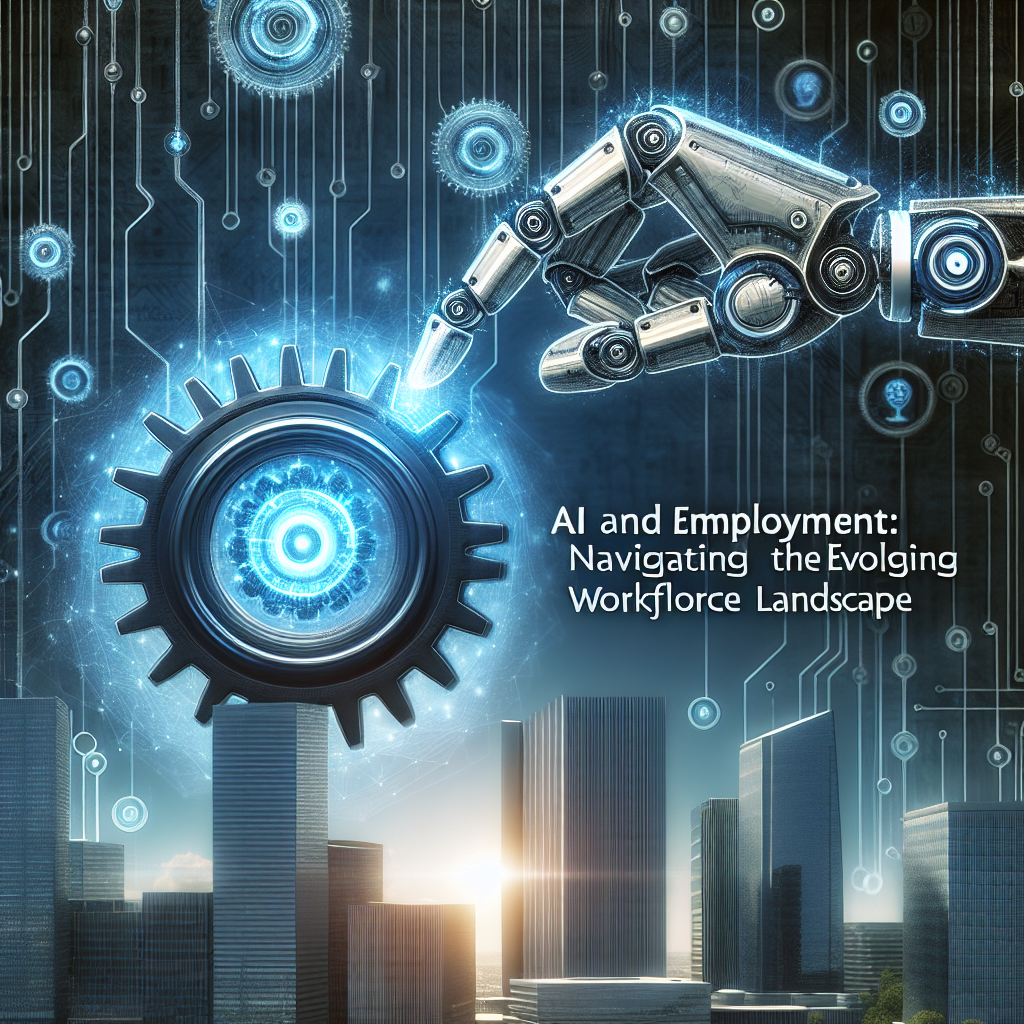Introduction
The swift evolution of artificial intelligence (AI) in recent years has ignited discussions about its effects on employment. As AI technologies increasingly permeate various sectors, worries about job loss and workforce transformation have emerged. Yet, this changing landscape also offers avenues for innovation and progress. This article examines the relationship between AI and employment, highlighting the emerging workforce dynamics in this era of automation.
The Current State of AI in the Workforce
AI has infiltrated numerous fields, including healthcare, finance, manufacturing, and retail. Its applications span from data analytics and predictive modeling to automating mundane tasks. Key statistics illustrate AI’s extensive influence:
- As noted in a McKinsey report, around 375 million workers worldwide might need to transition into new occupational categories by 2030 due to automation.
- The World Economic Forum forecasts that AI could generate 12 million new jobs globally by 2025, even while certain roles are phased out.
These statistics highlight a reality where AI acts not only as an efficiency tool but also as a driver of transformation in employment structures.
Opportunities and Challenges
Job Displacement
A significant concern surrounding AI’s influence on employment is job displacement. Routine and manual tasks, such as data entry or assembly line functions, are especially susceptible. The fear that technology might eliminate specific jobs is legitimate, prompting calls for policies aimed at alleviating the adverse effects of automation.
Job Creation
On the flip side, AI also generates new job opportunities necessitating diverse skill sets. Roles in AI development, data science, and cybersecurity are experiencing growth. Additionally, industries will require professionals to manage, maintain, and enhance AI systems. According to the World Economic Forum, soft skills—like creativity, emotional intelligence, and adaptability—are becoming increasingly important as machines handle repetitive tasks.
Reskilling and Upskilling
As the job landscape evolves, there is a pressing need for reskilling and upskilling initiatives. Governments, educational institutions, and private enterprises are acknowledging the importance of preparing the workforce for a reality shaped by AI. Lifelong learning and adaptability will be crucial traits for thriving in this new environment. Programs concentrating on coding, data literacy, and critical thinking can empower workers to excel in an automation-driven world.
Industry-Specific Impacts
Healthcare
In the healthcare sector, AI is improving diagnostic precision and streamlining administrative functions. While some positions, like medical transcriptionists, may decrease, new roles in telemedicine, health informatics, and AI system optimization are expected to rise.
Manufacturing
Manufacturing has historically been linked to automation, and AI is intensifying this trend. While conventional manufacturing roles may shrink, there’s a growing need for tech-savvy professionals who can operate and maintain advanced machinery.
Retail
AI is transforming the retail landscape through personalized shopping experiences and enhanced inventory management. While this may lead to fewer traditional retail jobs, new opportunities are emerging in e-commerce, logistics, and customer experience design.
Ethical Considerations
The integration of AI into the workforce brings forth ethical dilemmas. Concerns related to job displacement, privacy, and decision-making biases require thorough scrutiny. Policymakers and business leaders must navigate these challenges to ensure that AI’s benefits are equitably distributed.
The Role of Government and Policy
Governments play a pivotal role in guiding the transition to an AI-augmented workforce. Policies that promote education, encourage reskilling programs, and propose social safety nets can help mitigate the effects of workforce disruptions. Moreover, collaborative initiatives with the private sector can stimulate innovation while emphasizing workforce stability.
Conclusion
As we find ourselves at the crossroads of AI and employment, it’s crucial to view this transformation not only as a challenge but also as an opportunity. While the risk of job displacement is real, the emergence of new roles and the potential for increased efficiency offer pathways to growth and innovation. By emphasizing education, reskilling, and ethical considerations, societies can navigate the transition into a new workforce framework more effectively. Embracing change, fostering adaptability, and seeking cooperative solutions will be essential for thriving in the AI era.

